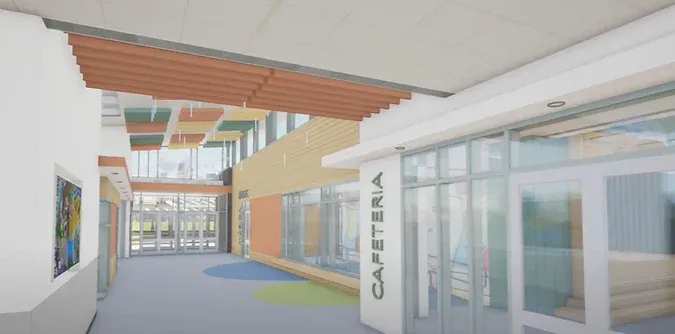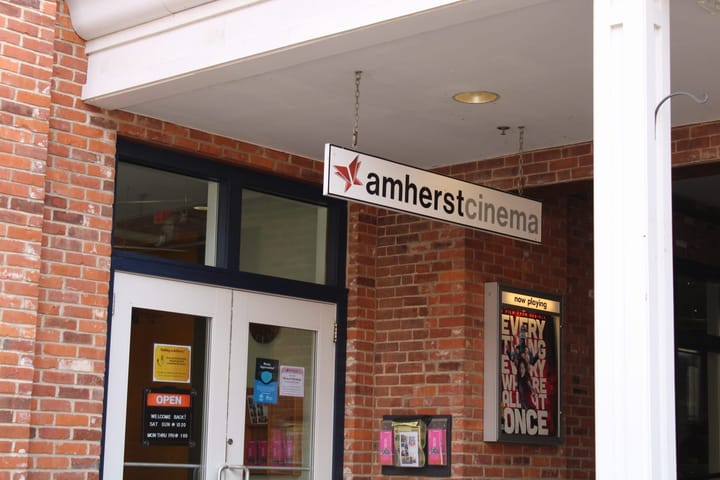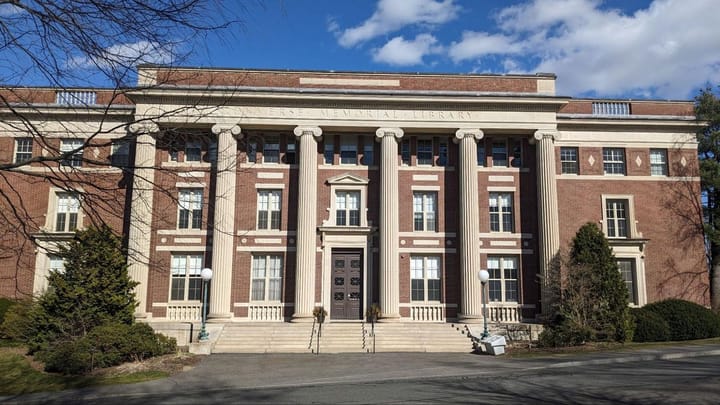Town Community Approves Construction of New Elementary School
The town of Amherst’s citizens voted on May 2 to fund the creation of a new public elementary school, with construction beginning in 2024. The decision comes in the wake of deteriorating physical conditions and declining enrollment in the district.

At Fort River Elementary School, one of Amherst’s two public elementary schools, mobile dividers section off a large room into separate classrooms. They are lined with murals, art projects, and bilingual bulletin boards. After school, students play a game of kickball around an overgrown grass field and orchestrate an impromptu wedding between two stuffed dolphins.
Now, both Fort River and Wildwood, the town’s other elementary school, are set to be replaced by a single, new school. The decision was formally made on May 2, when 81.7 percent of town residents voted to approve funding for the project, which was developed as a response to deteriorating physical conditions and declining enrollment in the district.
This vote comes after a failed attempt to approve a new building at the Wildwood campus in 2016. Despite being awarded an initial grant from the Massachusetts School Building Authority (MSBA) and garnering approval from town voters, the project was shot down at a town meeting, Amherst’s former governmental structure, which enlists the town’s eligible voters in a deliberative format. People who opposed the measure disapproved of the building design and preferred to have smaller, kindergarten-to-sixth-grade neighborhood schools as a means to advance equity.
After changing to a town council setup, with elected officials, and consulting those who had previously opposed the building design to craft the new one, the proposal proved successful last week.
Construction will start in 2024 for the kindergarten-to-fifth-grade, three-story, net-zero building with space for outdoor learning at the Fort River site. The cost of this project will be $99.2 million and will be partially funded by a $40 million subsidy from the MSBA.

Despite concern that the project would be too expensive, the new school will actually reduce current operating costs by at least $1 million a year, according to projections in a report provided by the town. This includes a $250,000 reduction in electric and fuel costs.
By upgrading the fields, trails, and establishing outdoor play spaces, the community will also benefit, as all of this area will be open to the public when the school is not in session, said Ellen Boucher, associate professor of history, whose two daughters attend Wildwood Elementary School.
Additionally, the new building will reduce the town’s carbon footprint. Currently, the buildings are powered by natural gas and oil. They will now be all-electric, using ground-source heat pumps (no fossil fuels) and photovoltaic panels for renewable energy.

Boucher’s daughters, aged 7 and 10, “love their school,” she said. “But I think they are also aware of the fact that some of the classrooms are not necessarily the most up to date.”
There were previous instances of lead detected in the school's water fountains, which Boucher referenced. She noted that — at the beginning of class, pre-pandemic — students at Wildwood were assigned the job of pressing the button on water fountains to flush out potential toxins, including lead.
“That sends a message to children that there’s something wrong here, even if they can’t necessarily articulate in their own words what their school building should look like,” Boucher said.
The school also bought an electric air purifier to replace an outdated heating, ventilation, and air conditioning system, which “doesn’t produce an air quality we’re comfortable with,” said Michael Morris ’00, district superintendent, in an interview with The Student.

In addition to subpar environmental conditions, the schools’ structures are based on an “outdated pedagogical model,” Boucher said, referring to the “open classroom.”
In open classrooms, two different classes are held in the same room, partitioned by faux walls and bookshelves, so students must walk through other classes in session to reach the bathroom. When a Student reporter visited Fort River, a special education teacher held lessons in the corner of a larger classroom, only separated from the other class by 4-foot bookshelves.
The open classroom setup represents a “functional design issue” in the buildings, because it poses a problem for students who have noise sensitivities or are easily distractible, Morris said.
Additionally, Morris said, evidence shows that a noisy learning environment is especially a hindrance to students learning English as a second language.
“Our most vulnerable students are the ones most affected by [the building’s drawbacks],” Morris added.

For Boucher, the physical conditions of the buildings are not indicative of the quality of education students receive there.
“In Amherst, we really strongly value education and our educators work really, really hard,” she said. “They do a fantastic job and our schools are top notch.”
Although Boucher’s children won’t attend the new school, as it opens in 2026, “there is a net value for the community in terms of supporting the valuable work of our educators, moving forward with our goals on sustainability and climate and attracting families to Amherst,” she said.
Emily Potter-Ndiaye, head of education and curator of academic programs at the Mead Art Museum, whose children attend Fort River, added that “public school is the foundation of our democracy.”
Even if members of the college community aren’t personally attending the school, “to live at any level in the town, we are responsible for high quality education for all children,” Potter-Ndiaye added.
Potter-Ndiaye moved from New York City and chose to live in Amherst partly because she had heard good things about Amherst schools. Her children attend third and sixth grade at Fort River, but began at Crocker Farm, which is also in the Amherst-Pelham Regional School District.
“The difference between buildings was very noticeable,” Potter-Ndiaye said. “[At Fort River], students are not always in classrooms designed for learning. One of the classrooms used to be a cafeteria. That means they might not have great windows with natural light, which studies have shown is actually really excellent to help kids focus. They might not have a sink, or a workspace to do more creative projects.”

The new building may even be an asset for the college. For prospective faculty with many different job offers, the quality of schooling for their children is an important factor in their decision, Potter-Ndiaye said, and a building itself is very visible.
“Investment in public schools absolutely is going to attract people [and faculty],” said Margo Pedersen ’25, an education studies major who interned for the school district over the summer.
However, “it’s also important to make sure that as that takes place, the original populations of the schools are not left behind in favor of catering to those wealthier professors and their children,” Pedersen said.
As part of her summer internship, Pedersen attended planning meetings and toured Boston suburban schools with Morris to get ideas for the new school.
“I’m 100 percent pro public schools,” Pedersen said. “It is the responsibility of the town of Amherst to make sure that all children in the area have access to quality public education.”
Pedersen emphasized the importance of the college community expanding past its bubble.
“Amherst students, who by nature of being at Amherst have an interest in education, should care about what happens in public schools,” Pedersen said. “Students should see themselves as part of the Amherst community, not adjacent to it.”

Many students who express interest in public education and local issues have a real opportunity to put their thoughts into action, Pedersen added.
“A new school is an opportunity not only for students in town, but also for students here to participate, contribute and learn with them,” Pedersen said.
Boucher said she would “love it if our students were active in volunteering and seeking out opportunities to get involved in the schools and be mentors.”
Especially for low-income, minority students “it would be wonderful to see what it is possible to achieve and what futures are available to them,” Boucher added.
One way to get involved in the community is through voting, especially because the money that comes to the town of Amherst from the federal government is based on census data that counts students, said Sarah Barr, Director of Community Engagement at the college.
There are currently 15 students from the college who are active voters in the town of Amherst, according to data from the town.
“It’s important to pay attention to municipal projects and local government,” Barr said. “Whether it is schools, roads or parks, your town government makes a huge difference in daily life.”





Comments ()